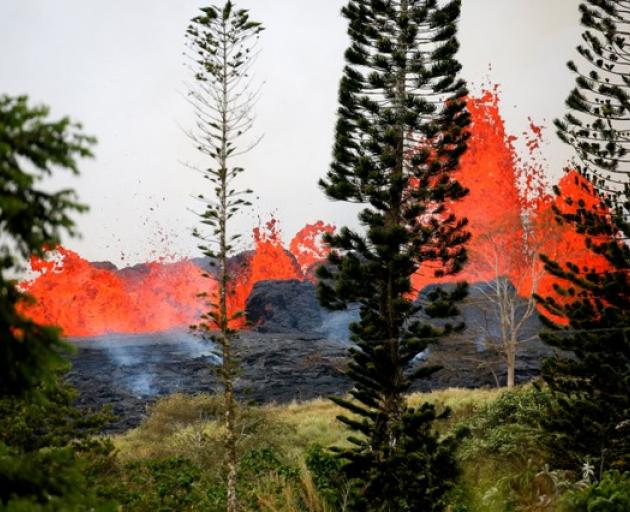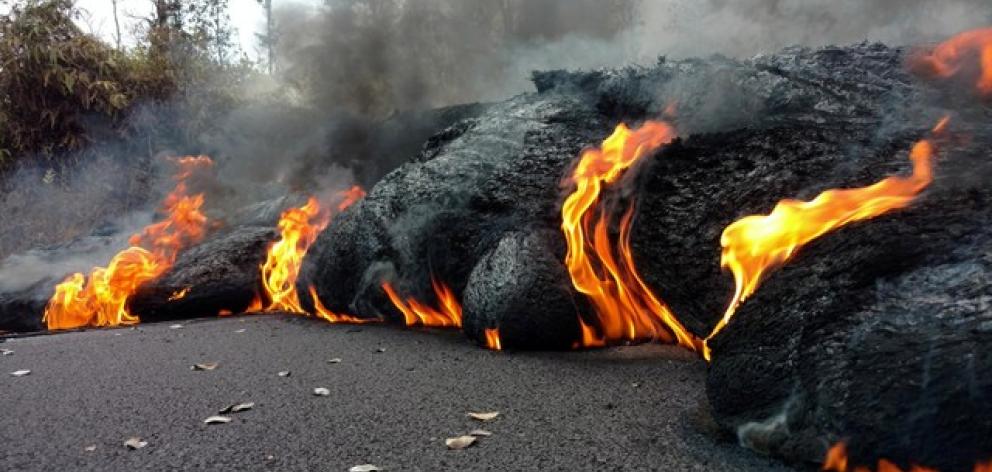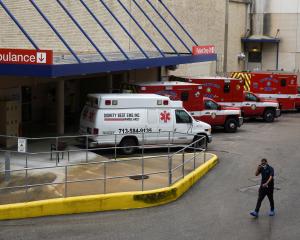
Lava oozed toward a key Hawaii highway on Saturday (local time) that serves as an escape route for coastal residents, after fresh explosive eruptions from the Kilauea volcano and magma flows that destroyed four more homes.
Molten rock from two huge cracks merged into a single stream and was expected to hit coastal Highway 137 within four to seven hours if it kept up its rate and direction of flow, the County of Hawaii's Civil Defense Agency said.
Authorities are trying to open up a road blocked by a 2014 lava flow to serve as an alternative escape route should Highway 137 or another exit route, Highway 130, be blocked, Jessica Ferracane of the National Park Service told reporters.
The Hawaii National Guard has warned of mandatory evacuations should either road be blocked.
For weeks, geologists have warned that hotter, fresher magma from Kilauea's summit would run underground and emerge some 25 miles east in the lower Puna district, where older, cooler lava has already destroyed 44 homes and other structures.
"Summit magma has arrived," said US Geological Survey scientist Wendy Stovall said on a conference call with reporters on Saturday.
"There is much more stuff coming out of the ground and its going to produce flows that will move much further away."

NEW EXPLOSIVE ERUPTION
At the volcano's summit, another large explosive eruption occurred around midnight, sending up a nearly two-mile-high ash plume, according to the Hawaiian Volcano Observatory. There was another explosion around 4pm, according to a Reuters reporter.
Scientists expect a series of explosive eruptions from Kilauea, one of the world's most active volcanoes, that could spread ash and volcanic smog across the Big Island, the southernmost of the Hawaiian archipelago.
That could pose a hazard to aircraft if it blows into their routes at around 9144 metres.
There have been no reported injuries or deaths since the eruption began on May 3.
Around 2000 residents of Leilani Estates and Laipuna Gardens housing areas near Pahoa, about 48km south of Hilo, have faced mandatory evacuations due to at least 22 volcanic cracks that have opened since May 3.
Many thousands more residents have voluntarily left their homes due to life-threatening levels of toxic sulfur dioxide gas spewing from vents in the volcanic fissures.












